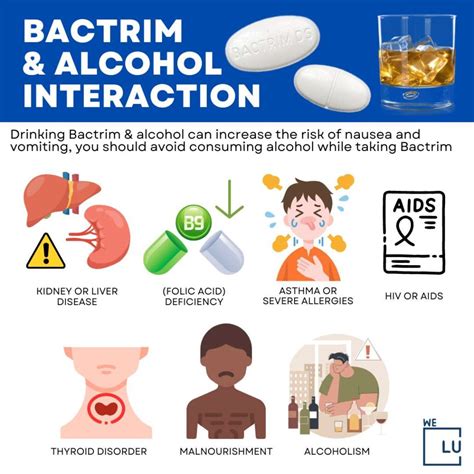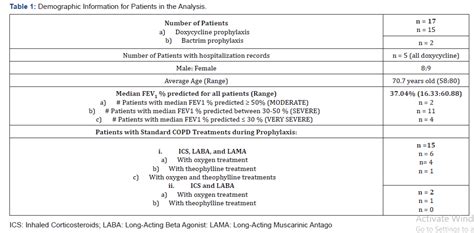Intro
Discover common Bactrim side effects, including allergic reactions, diarrhea, and nausea. Learn about rare but serious interactions, warnings, and precautions to minimize risks associated with this antibiotic medication.
The importance of understanding medication side effects cannot be overstated, especially when it comes to antibiotics like Bactrim. Bactrim, a combination of sulfamethoxazole and trimethoprim, is widely used to treat various bacterial infections. However, like all medications, it comes with potential side effects that patients should be aware of. Recognizing these side effects can help individuals take necessary precautions and seek medical attention when needed. In this article, we will delve into the world of Bactrim side effects, exploring their types, severity, and management.
Bactrim is prescribed for a range of infections, including urinary tract infections, ear infections, and bronchitis, among others. Its effectiveness in combating bacterial infections makes it a commonly prescribed antibiotic. However, the body's reaction to Bactrim can vary significantly from one person to another. While some may experience mild and temporary side effects, others might encounter more severe reactions that require immediate medical intervention. Understanding these potential side effects is crucial for patients to make informed decisions about their health care.
The variety of Bactrim side effects can be categorized into mild, moderate, and severe. Mild side effects are typically temporary and may include nausea, vomiting, and mild diarrhea. These are common reactions that often subside on their own without the need for medical attention. Moderate side effects, however, can be more bothersome and may include rash, itching, and dizziness. In some cases, these side effects can be managed with over-the-counter medications or by adjusting the dosage under the guidance of a healthcare provider. Severe side effects, such as severe allergic reactions, blood disorders, and liver or kidney damage, are less common but can be life-threatening, necessitating immediate medical care.
Understanding Bactrim

To grasp the concept of Bactrim side effects fully, it's essential to understand how the drug works. Bactrim belongs to the class of antibiotics known as sulfonamides. It functions by inhibiting the growth and multiplication of bacteria, thereby helping the body's immune system to fight off the infection. The combination of sulfamethoxazole and trimethoprim in Bactrim works synergistically to block two consecutive steps in the bacterial synthesis of tetrahydrofolic acid, a compound crucial for the production of DNA and proteins in bacteria.
Types of Bactrim Side Effects
Bactrim side effects can be categorized based on their severity and the systems of the body they affect. Common side effects include gastrointestinal disturbances like nausea, diarrhea, and vomiting. These are usually mild and temporary but can sometimes lead to dehydration, especially in vulnerable populations such as the elderly and young children. Other common side effects are allergic reactions, which can range from mild rash and itching to severe anaphylaxis, a potentially life-threatening condition that requires immediate medical attention.Common Side Effects of Bactrim

Some of the common side effects of Bactrim include:
- Nausea and vomiting
- Diarrhea
- Abdominal pain
- Dizziness
- Headache
- Rash
- Itching
These side effects are typically mild and may resolve on their own. However, if they persist or worsen, it's crucial to consult a healthcare provider for guidance. In some cases, adjusting the dosage or switching to a different antibiotic may be necessary.
Severe Side Effects of Bactrim
While less common, severe side effects of Bactrim can be life-threatening and require immediate medical attention. These include: - Severe allergic reactions (anaphylaxis) - Blood disorders (such as agranulocytosis, aplastic anemia) - Liver damage - Kidney damage - Stevens-Johnson syndrome, a rare but serious disorder of the skin and mucous membranesManaging Bactrim Side Effects

Managing Bactrim side effects involves a combination of preventive measures and interventions. Patients can reduce the risk of gastrointestinal side effects by taking Bactrim with food. Staying hydrated is also crucial, especially if diarrhea or vomiting occurs. For allergic reactions, antihistamines may be prescribed, while severe reactions may require hospitalization and administration of epinephrine.
Prevention is Key
Preventing Bactrim side effects starts with proper use of the medication. Patients should adhere strictly to the prescribed dosage and duration of treatment. It's also essential to inform healthcare providers about any pre-existing medical conditions, allergies, or medications being taken, as these can interact with Bactrim and increase the risk of side effects.Bactrim Interactions

Bactrim can interact with various medications, potentially leading to increased side effects or reduced efficacy of either drug. Some of these interactions include:
- Blood thinners (warfarin)
- Diabetes medications (oral hypoglycemics)
- Methotrexate, used for cancer and autoimmune diseases
- Phenytoin, an antiepileptic drug
Understanding these interactions is vital to avoid adverse effects. Patients should maintain an open dialogue with their healthcare providers about all medications they are taking.
Patient Safety
Ensuring patient safety while on Bactrim involves monitoring for side effects and reporting any concerns to a healthcare provider promptly. Regular follow-up appointments can help in early detection of potential issues. Additionally, patients should be aware of the signs of severe side effects and know when to seek emergency care.Conclusion and Next Steps

In conclusion, while Bactrim is an effective antibiotic for treating various bacterial infections, it's crucial for patients to be aware of its potential side effects. By understanding the types of side effects, their management, and prevention strategies, individuals can make informed decisions about their health care. If you or someone you know is experiencing side effects from Bactrim, it's essential to consult a healthcare provider for personalized advice and care.
We invite you to share your experiences or ask questions about Bactrim side effects in the comments section below. Your input can help others better understand and navigate the potential challenges associated with this medication. Additionally, consider sharing this article with friends and family who may benefit from this information, helping to promote awareness and safe use of antibiotics.
What are the most common side effects of Bactrim?
+The most common side effects of Bactrim include nausea, diarrhea, vomiting, abdominal pain, dizziness, headache, rash, and itching. These are usually mild and temporary.
How can I manage Bactrim side effects?
+Managing Bactrim side effects involves taking the medication with food, staying hydrated, and informing your healthcare provider about any pre-existing conditions or medications. For severe side effects, medical intervention may be necessary.
Can I take Bactrim if I have a history of allergies?
+If you have a history of allergies, especially to sulfa drugs, you should inform your healthcare provider before taking Bactrim. They will assess the risks and benefits and decide if Bactrim is safe for you to use.
